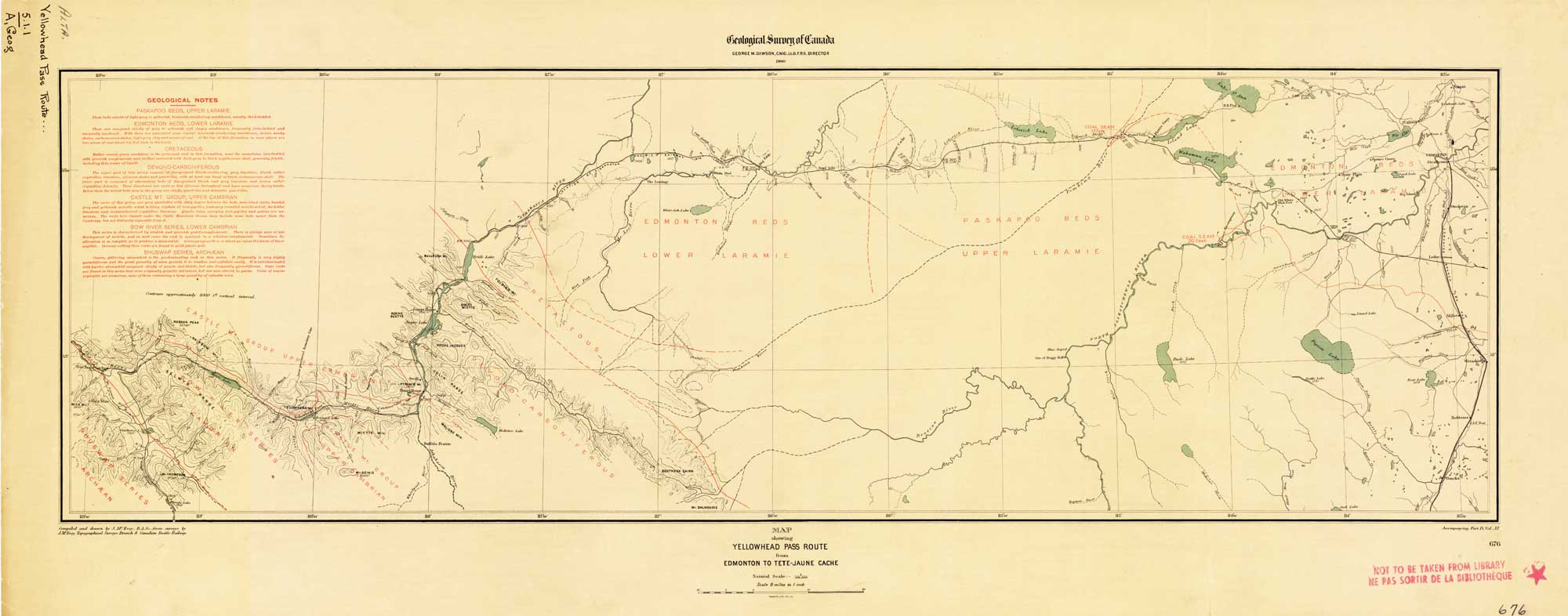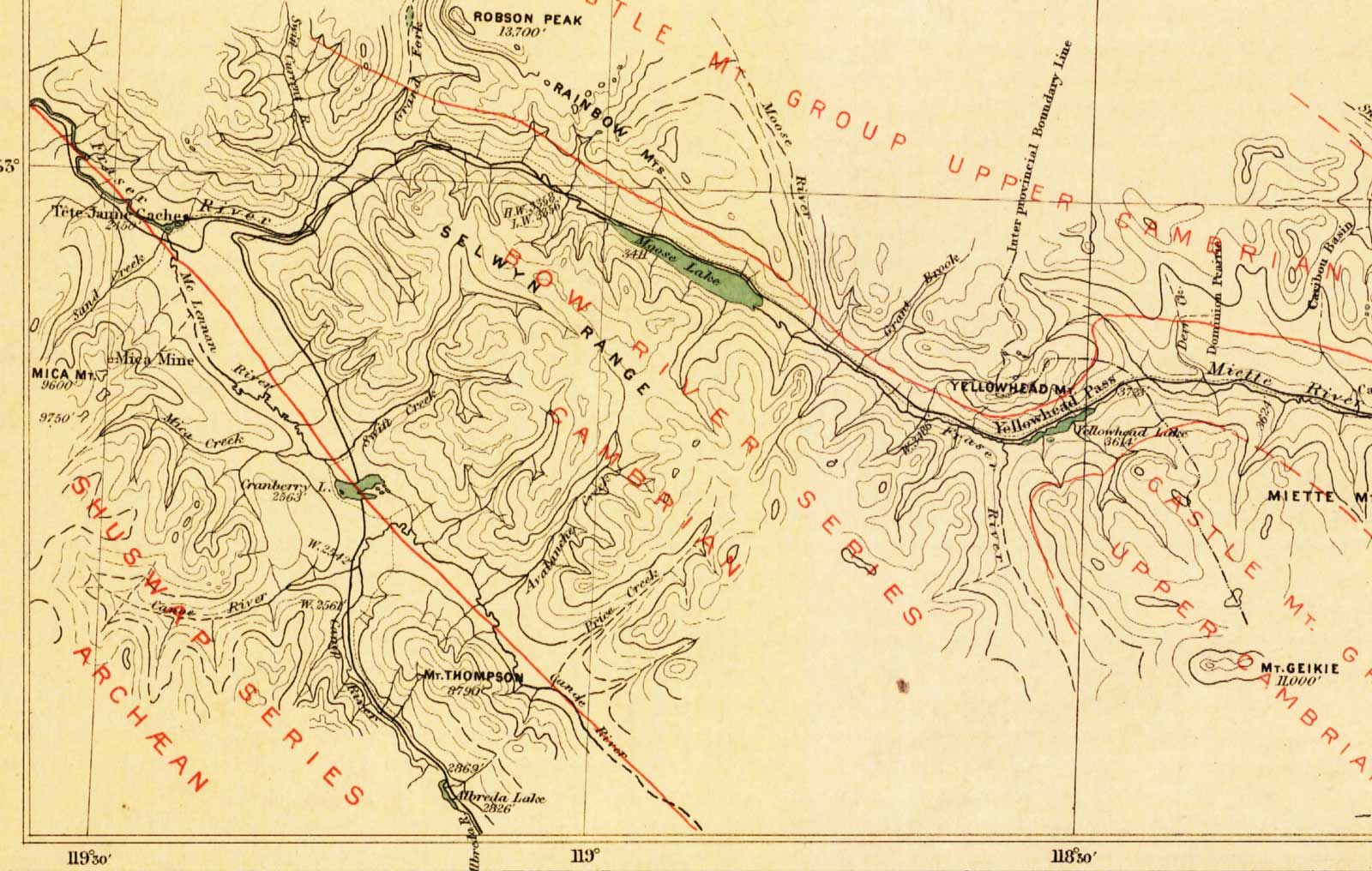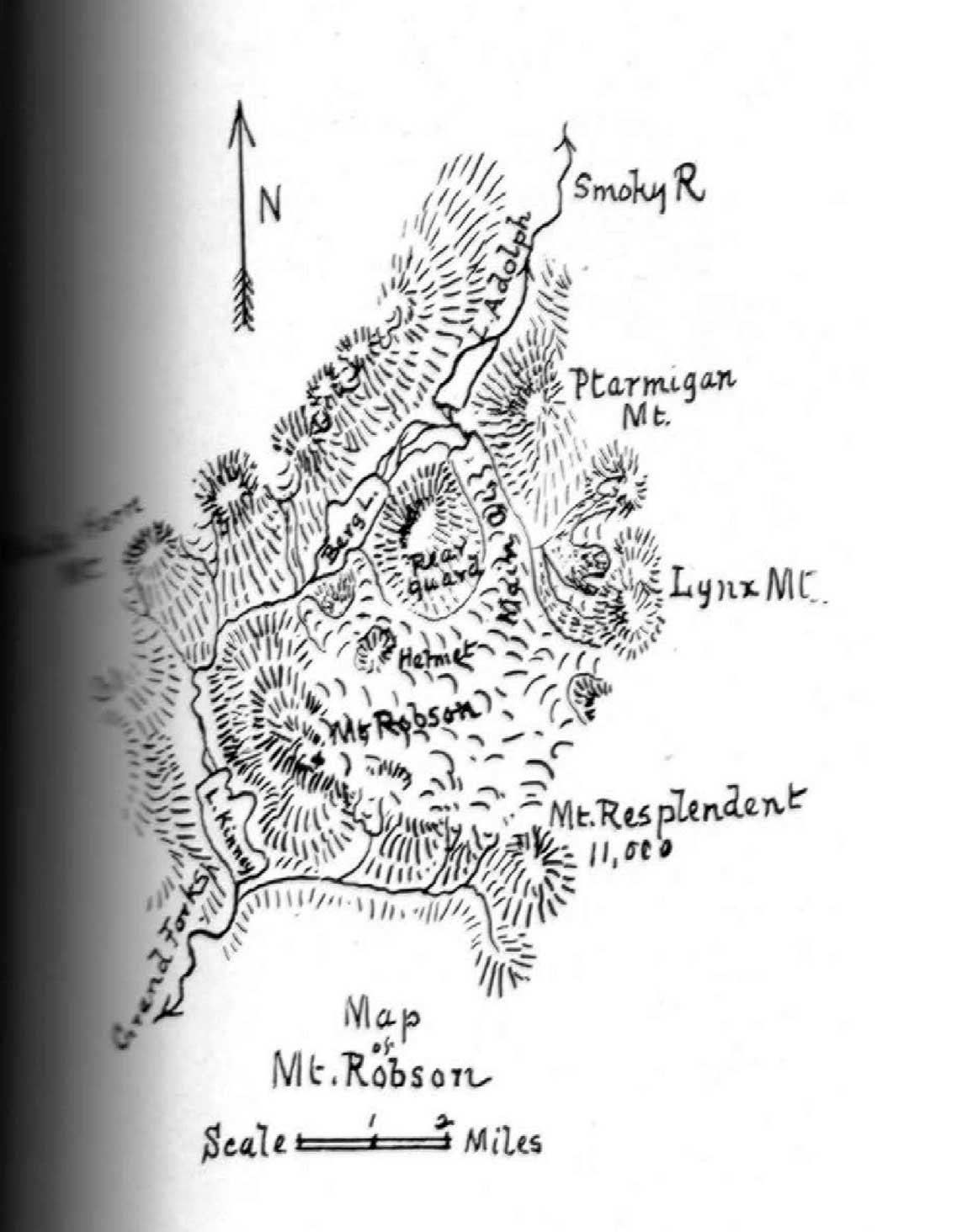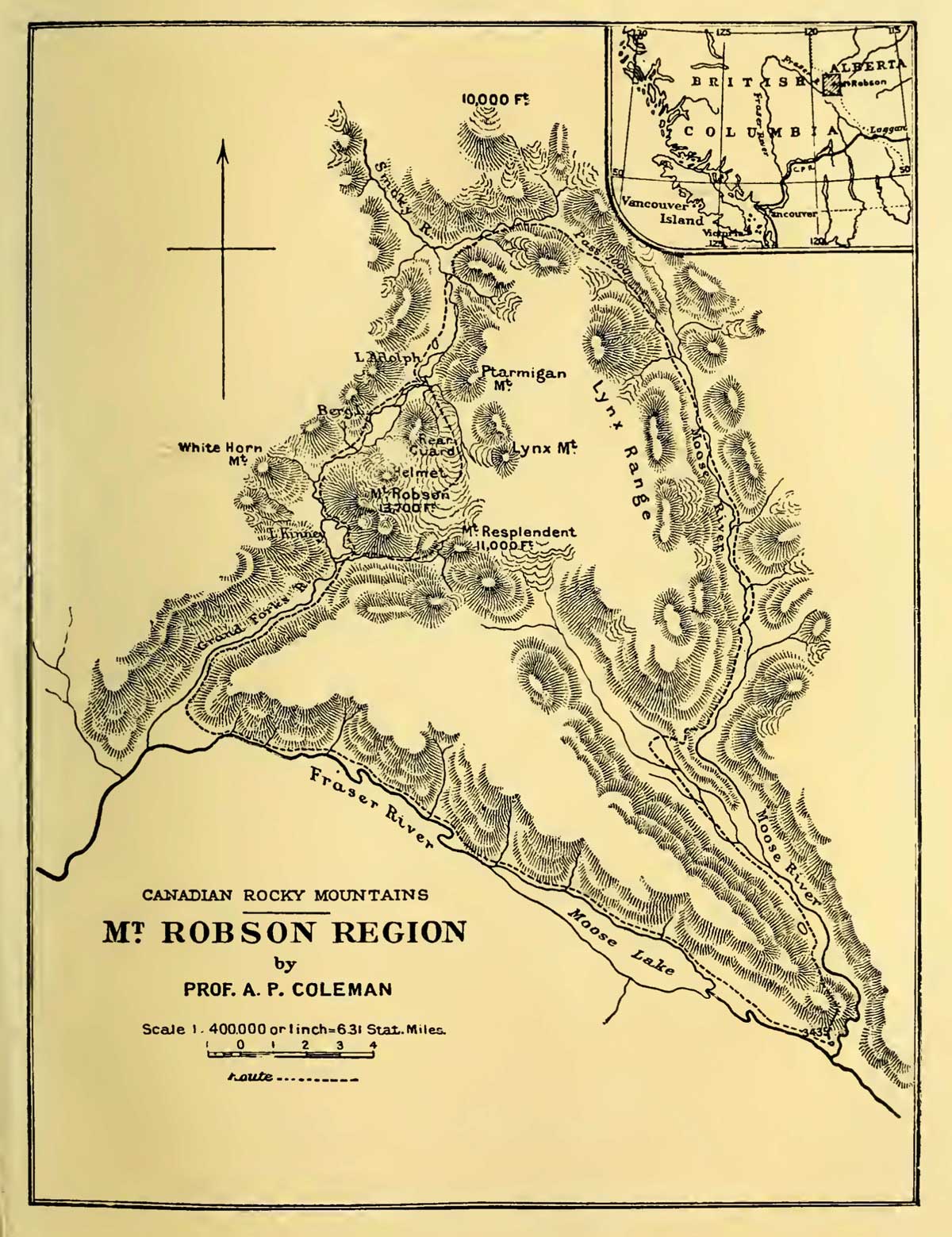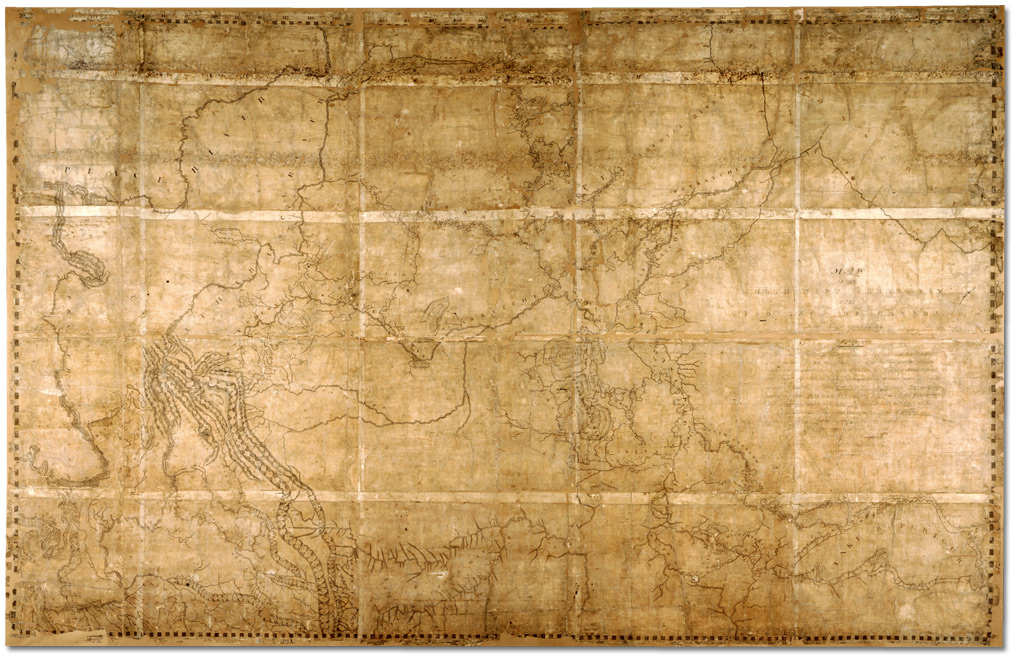
Map of the North-West Territory of the Province of Canada.David Thompson, 1814
Archives of Ontario
Archives of Ontario, I0030317, David Thompson fonds
Reference Code: F 443, R-C(U), AO 1541
Surveying for the North West Company, David Thompson [1770–1857] located the headwaters of the Mississippi River, crossed the Rocky Mountains and mapped the entire length of the Columbia River.
Thompson retired from the fur trade in 1812 and moved his family to Terrebonne near Montreal. He was given a special assignment to plot all the Company’s posts on a comprehensive map of the Canadian West using the astronomical observations he had carefully recorded.
Thompson’s map is approximately 213 centimetres (84″) high by 328 centimetres (129″) long. It gave an accurate depiction of the vast territory traversed by the fur trade and location of Company posts.
- Nesbit, Jack [1949–]. Mapmaker’s Eye: The Mapmaker’s Eye: David Thompson on the Columbia Plateau. Pullman: Washington State University Press, 2006
